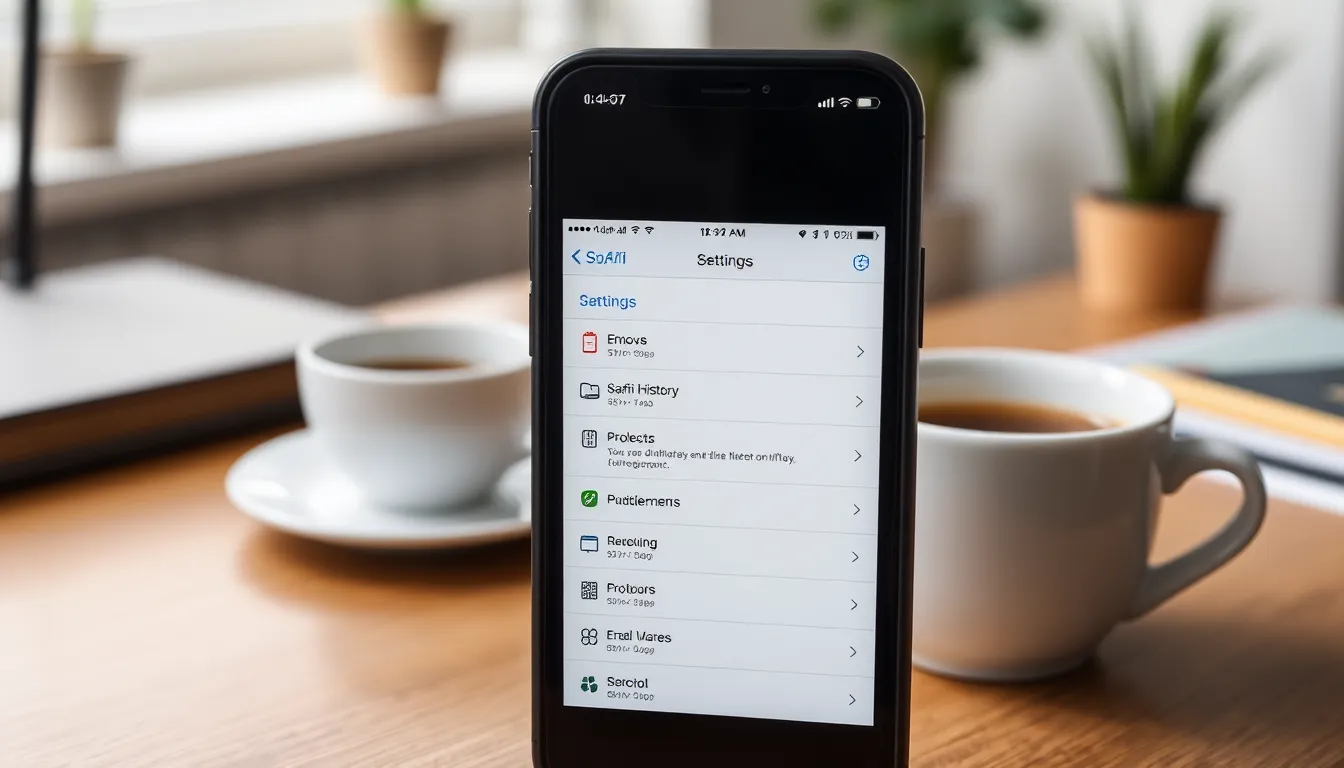Table of Contents
ToggleEver wondered what your iPhone knows about your online escapades? Maybe you accidentally deleted that hilarious cat video you swore you’d share with your friends, or perhaps you’re just curious about your browsing habits. The truth is, even though you hit delete, traces of your internet history might still be lurking around like a ghost in a haunted house.
Understanding Internet History on iPhone
iPhones retain a variety of online activity data, even when users believe they deleted it. Understanding this data’s importance enables better online privacy management.
Importance of Internet History
Internet history provides insight into users’ browsing habits and preferences. This data helps in personalizing online experiences by delivering relevant content. Marketers rely on it to tailor advertisements to specific audience needs. Additionally, it assists users in accessing previously visited sites and recalling passwords. Considering these factors emphasizes why recognizing the persistence of internet history matters for informed usage.
What Happens When History is Deleted
When users delete browsing history, it doesn’t entirely eradicate all traces of their activity. Data may still be stored in backup files or synchronization services. Certain apps and browsers might retain cached versions of webpages. Privacy features like incognito modes and private browsing limit visibility but do not completely eliminate data retention. Awareness of these nuances serves to enhance users’ control over their online footprint.
Methods to See Deleted Internet History

Users can retrieve deleted internet history on an iPhone through various methods. Below are some effective techniques to access this information.
Using iCloud Backup
iCloud Backup creates a copy of an iPhone’s data, which includes browsing history. To access this data, users must restore their iPhone from a previous backup. It’s essential to check that the backup predates the deletion of the history. After turning off “Find My iPhone,” user can reset the device and follow prompts to restore from iCloud. This method enables retrieval of lost data, though it’ll erase current settings and information.
Checking Safari Data
Safari retains some browsing information even after it’s deleted. Users can check Safari’s settings for a list of frequently visited sites or the search history stored within iCloud. Navigating to Settings, then Safari, allows users to view and manage this data. Setting “Clear History and Website Data” doesn’t eliminate everything completely, so checking this feature may reveal traces of previous internet activity.
Third-Party Apps
Several third-party apps offer ways to recover deleted internet history. These applications, designed for data recovery, can scan the iPhone for remnants of browsing data. Users should research applications with positive reviews and ensure they align with privacy standards. Installing and using these apps generally involves following straightforward prompts, guiding users through the recovery process. However, results may vary based on the app’s efficiency and the iPhone’s data state.
Steps to Recover Deleted Internet History
Recovering deleted internet history on an iPhone is possible through various methods. These methods can help users access their browsing activity even if they believe it’s permanently erased.
Step-by-Step Guide for iCloud
- Open Settings on the iPhone and tap on one’s name at the top.
- Select iCloud and then choose iCloud Backup.
- Tap Restore from iCloud Backup. This option requires the user to select a recent backup that contains the desired browsing history.
- Confirm the restoration. Note that this process erases all data created after the chosen backup date, so important information should be backed up elsewhere.
Alternative Steps for Safari
- Launch Safari, and tap on the book icon at the bottom of the screen.
- Select History to view the list of recently visited sites. Some entries may still show even after deletion.
- Go to Settings > Safari to check Advanced settings. Under Website Data, cached data may provide insights into previous internet activity.
- Explore Frequently Visited sites on the Safari homepage. These links remain until users choose to clear them or disable this feature altogether.
Precautions When Recovering Data
Recovering deleted internet history requires careful consideration. Users must approach the process with mindfulness regarding privacy and data security.
Privacy Considerations
Personal data often includes sensitive information, making privacy a primary concern. Browsing history can reveal personal habits and preferences. Knowing this, individuals should regularly check their privacy settings on their devices. Users must consider the implications of restoring data, as previous backups could expose unwanted information. Additionally, using features like incognito mode does not guarantee complete data deletion. While these modes offer temporary privacy, traces may still exist. Assessing these risks and proactively managing data helps protect personal privacy.
Using Trusted Tools
Selecting reliable tools for data recovery is essential. Users should find software from reputable developers to avoid potential malware or data loss. Each application may vary in effectiveness and security, so reviews and user feedback provide necessary insights. Understanding these tools’ functionalities helps users make informed decisions. Backup solutions, like iCloud, often come with built-in security features that enhance user protection. Assessing each tool’s privacy policy reveals how the software handles personal data. This diligence ensures individuals recover deleted history safely and efficiently.
Understanding how to see deleted internet history on an iPhone is crucial for managing one’s digital footprint. Users often underestimate the persistence of their online activities even after attempting to erase them. By exploring various methods like iCloud Backup or checking Safari settings, individuals can uncover remnants of their browsing history.
However, it’s essential to approach data recovery with caution. The sensitivity of personal information means that users should prioritize their privacy when using third-party apps or restoring backups. Staying informed about privacy settings and the implications of data recovery can empower users to take control of their online presence.




